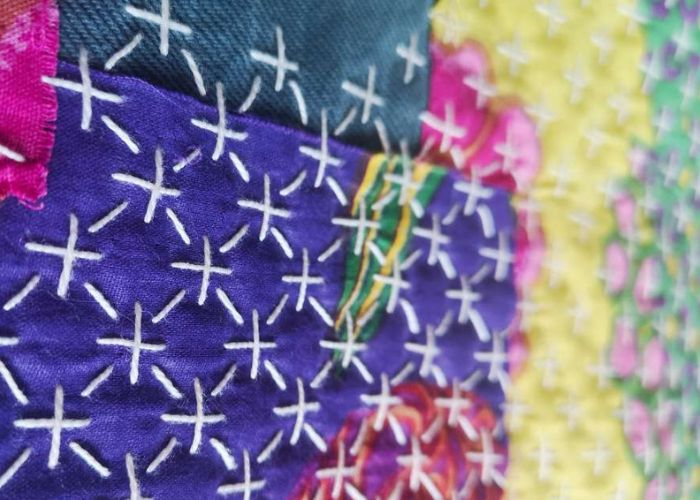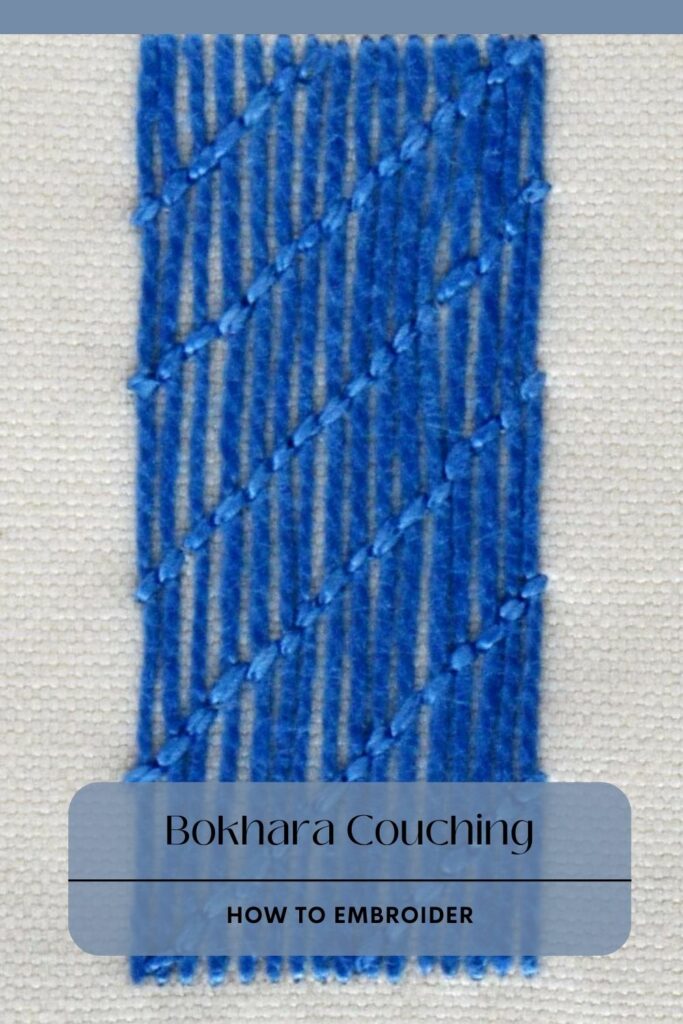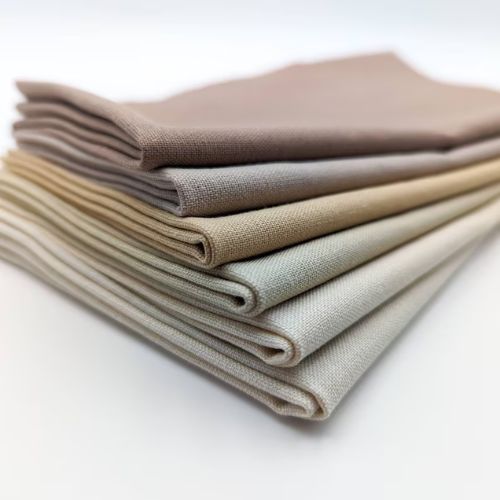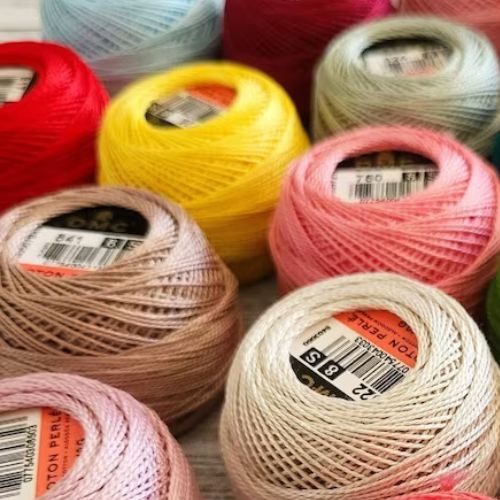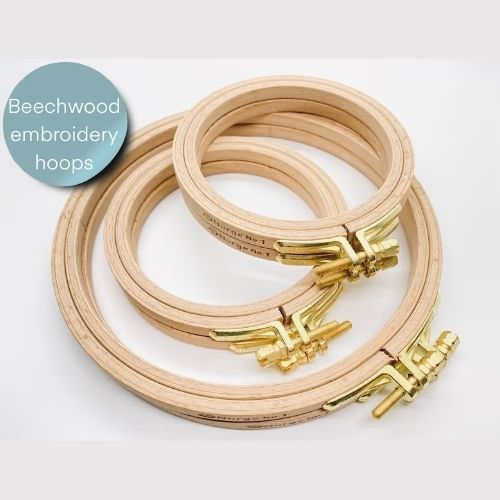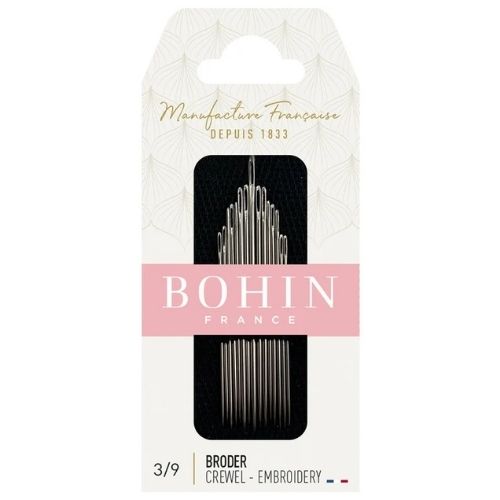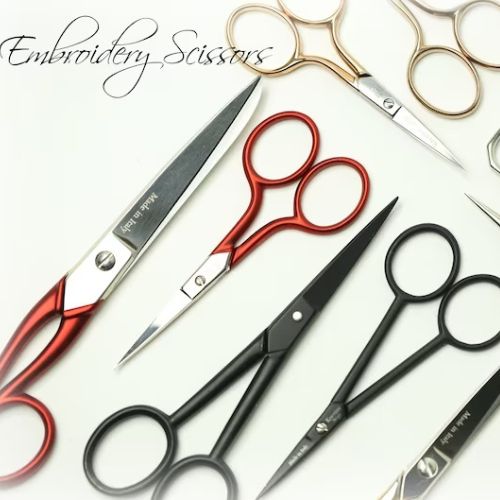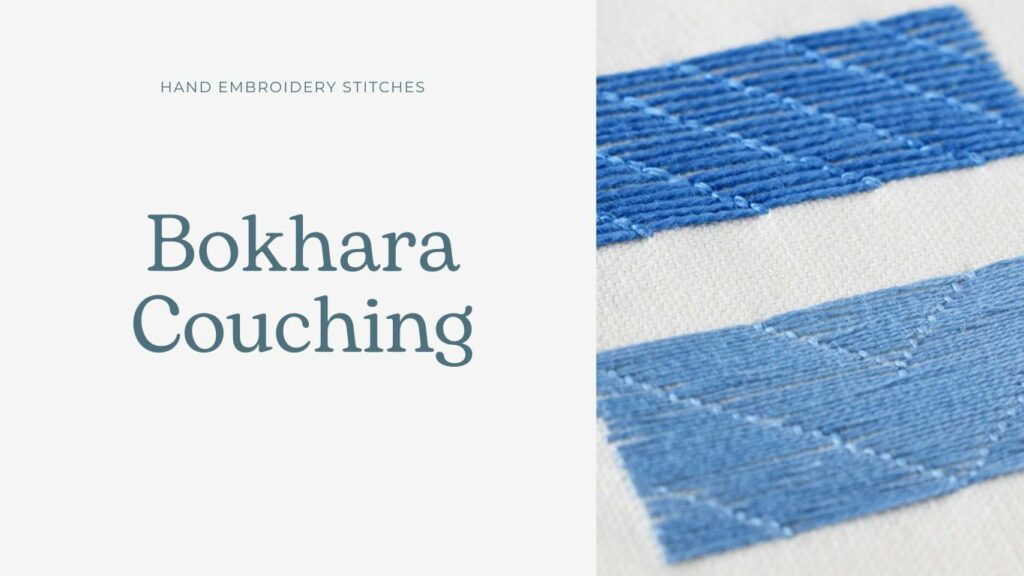
Bokhara Couching
Bokhara Couching, also known as self-couching, is a fascinating hand embroidery technique. Its origins can be traced back to the city of Bukhara in Uzbekistan, where it was traditionally used to embroider large wall hangings called Suzani. In this technique, the laid and couching threads are the same, creating a unique and decorative effect.
Short couching stitches, forming a pattern (often diagonal) across the filled shape, not only add interest but also offer a world of creative possibilities. With Bokhara Couching, you have the power to create any pattern that perfectly complements your unique design.
Other names of Bokhara Couching
Kloster stitch, Self-couching stitch, Laid Oriental filling, Bukhara Couching, and Bokharan Couching are the alternative names of this hand embroidery technique.
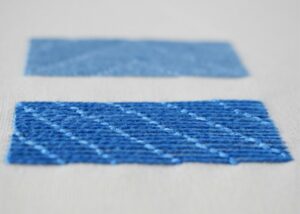
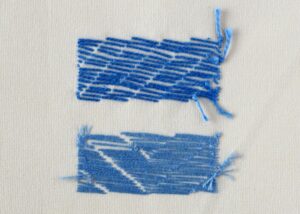

Applications of the Bokhara Couching
The Bokhara Couching stitch is not just a beautiful technique, but also a practical one. It’s an excellent choice for filling large areas with a straightforward pattern. The couching stitches create a stable surface, even when working on expansive areas, making it a reliable technique for various embroidery projects.
Historically, Bokhara Couching has been a revered technique, used to create grand tapestries and wall hangings. The direction of the laid thread was traditionally vertical, from top downwards, but feel free to adapt this to your design.
More stitches from the Couching stitch family
Learn how to embroider Bokhara Couching Stitch
Embarking on your journey to learn Bokhara Couching is an exciting adventure. Follow this step-by-step tutorial with detailed photos, and you’ll be stitching this beautiful technique in no time. For those who prefer visual learning, I also have a video lesson on the Practical Embroidery YouTube channel to help you master this hand embroidery technique even faster.
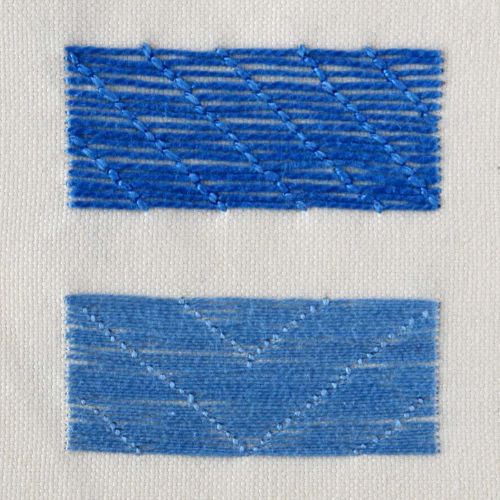
How to embroider Bokhara Couching
Step-by-step hand embroidery tutorial
Instructions
1. Define the shape you wish to fill with Bokhara couching and decide on the surface pattern. Mark both on the fabric.
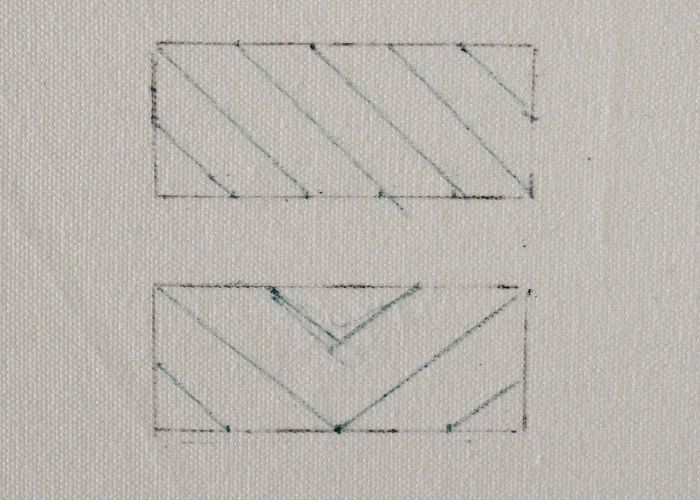
2. Take the needle up on the left-top corner of the filling area. Make a long horizontal stitch to the right-top corner of the shape. Pull the thread to the back.
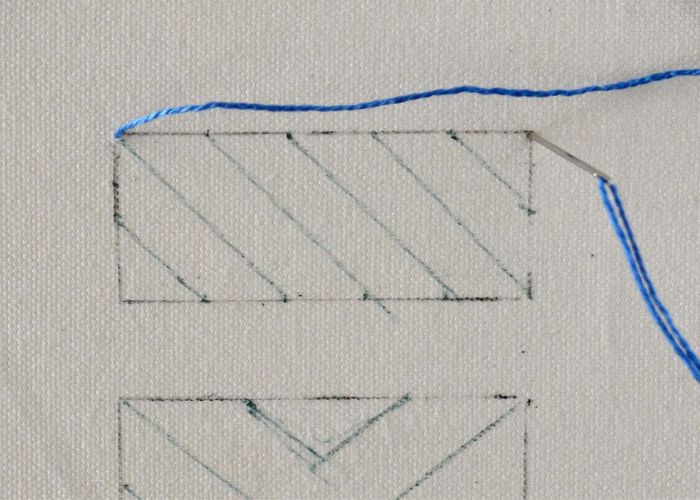
3. Take the needle up to the surface under the laid thread on the first mark of the pattern.
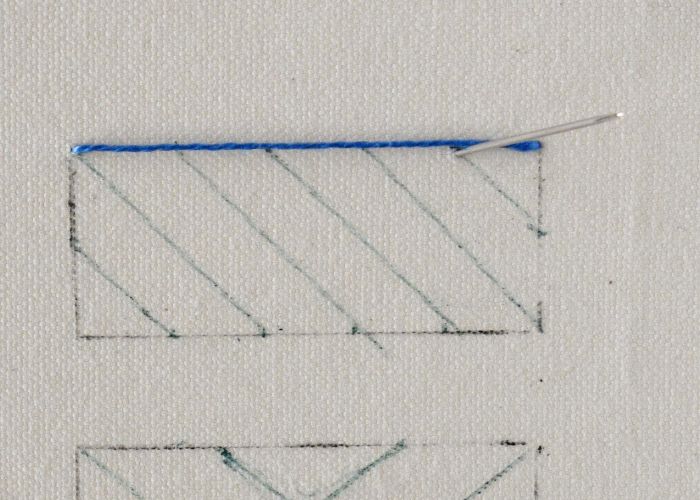
4. Take the needle down on the same mark. Make a short stitch to anchor the laid thread. Pull the thread to the back side of the fabric.

5. Make the second couching stitch on the next mark.
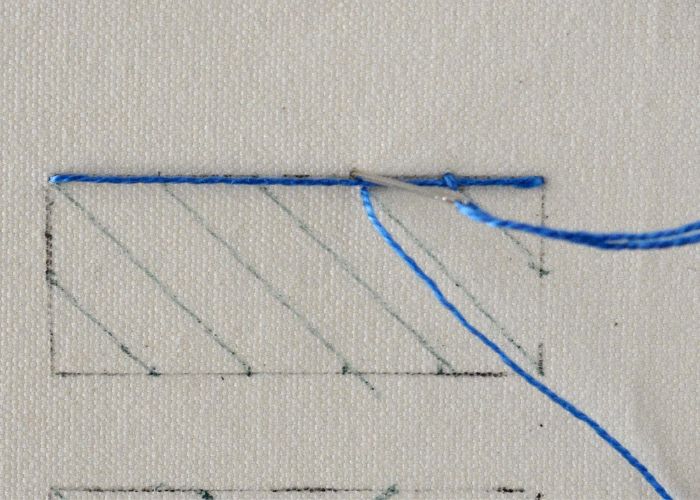
6. After all the couching stitches of the first row are done, take the needle up on the left just under the first laid stitch and make a long stitch parallel to the first one.
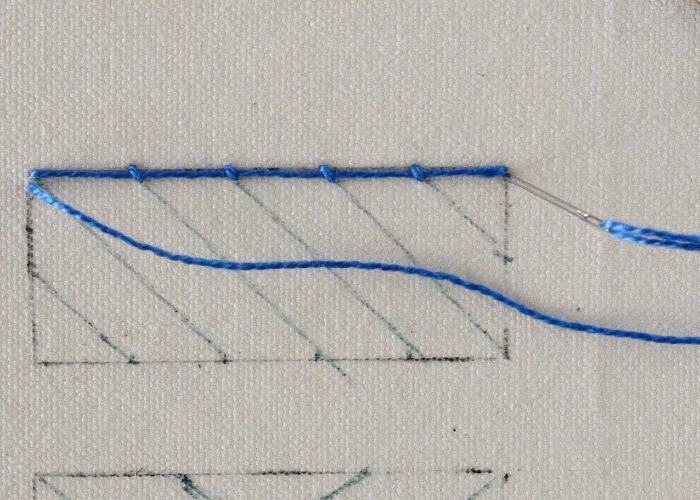
7. Add couching stitches to secure the second laid thread.
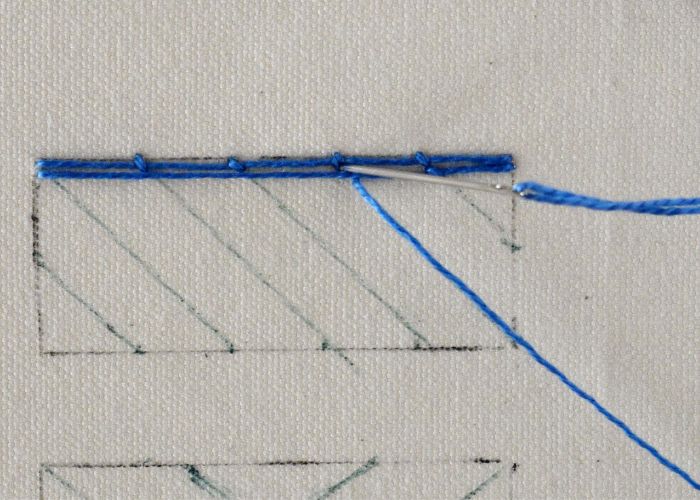
8. Continue adding the rows of sefl-couched stitches until you fill the entire shape.

Video tutorial
Tools and materials I used for this sampler
Disclaimer. To cover the cost of creating free embroidery patterns and video tutorials for this blog, I do sometimes link to products. Please assume these links are affiliate links. If you choose to buy through my links then THANK YOU – it will make it possible for me to keep doing this.
What’s next?
If you’re in the mood to explore more hand embroidery stitches, check out the Stitches and Techniques page for the list of other fantastic stitches available on my blog. From timeless classics to modern twists, a whole world of stitches is waiting for you to explore and master. So, grab your hoop and needle, and let’s stitch our way to creative bliss!
Don’t miss a thing!
Follow me on YouTube, Instagram, Facebook, and Pinterest. Or why not subscribe to Practical Embroidery newsletter and get embroidery tips straight to your inbox every few weeks?
Need More Guidance?
The top 10 hand embroidery stitches to learn is a free online course created for beginners.
